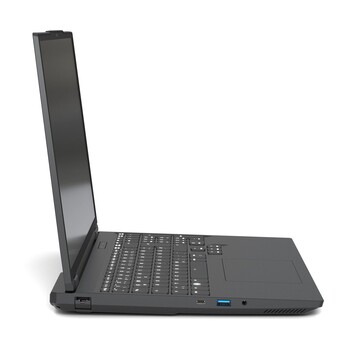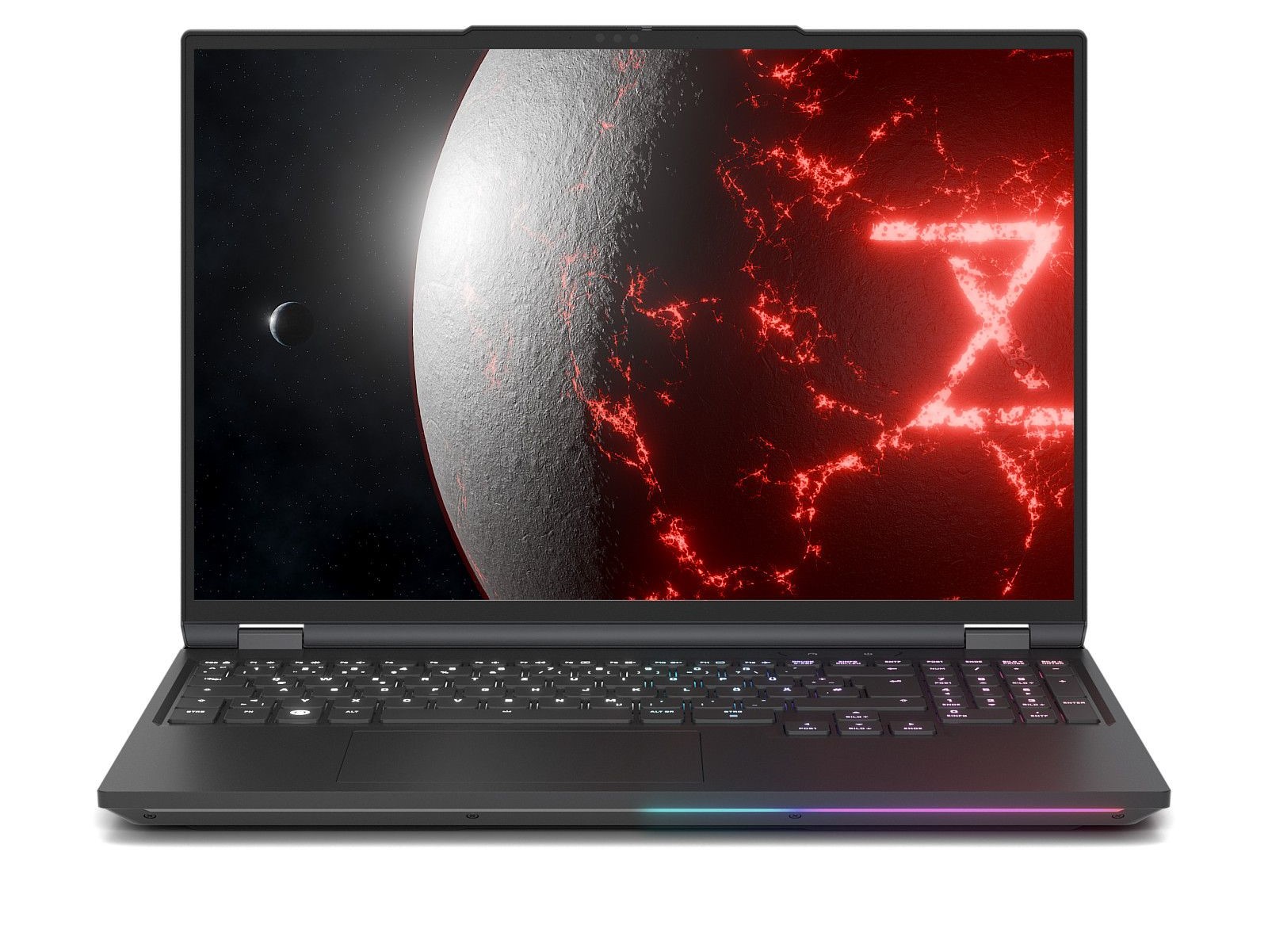The seventh-generation Tuxedo Stellaris 16, released a short while ago with Intel processors, is now also available with AMD CPUs. These include the AMD Ryzen 9 9955HX and AMD Ryzen 9 9955HX3D processors, which can be ordered with a Nvidia GeForce RTX 5070 Ti, RTX 5080 or 5090 GPU. The TGP of the two larger models is 150 watts, with Dynamic Boost of 25 watts. The TDP of the processors can be configured between 10 and 130 watts in the Tuxedo Control Center.
Up to five screens (including the laptop display) can be used simultaneously thanks to HDMI 2.1, DisplayPort 1.4 and USB 3.2 Gen 2. The 357 x 260 x 28 millimeter notebook weighs 2.8 kilograms with the mini-LED display; the LED display is 150 grams less. Both displays feature a resolution of 2,560 x 1,600, measure 16 inches and offer a maximum refresh rate of 300 Hz. The mini-LED display is said to offer HDR brightness of up to 1,000 cd/m² and better contrast. The display can be opened by around 180°. A MUX switch is installed, but G-Sync and Advanced Optimus are not yet supported, at least not yet.
Up to 96 GB of 5,600 MHz RAM can be installed in two slots, while two M.2 2280 SSDs, each with four PCIe 5.0 and PCIe 4.0 lanes, can be mounted. An M.2 2230 card enables wireless connectivity, while 2.5 Gbp Ethernet is also available. Further features include a Full HD webcam, two 2-watt speakers, a memory card reader and a connection for the Tuxedo Aquaris water cooler. Tuxedo OS is installed, and Windows is naturally also supported.
Tuxedo charges €2,184 ($2574) for the base configuration with an IPS display, Ryzen 9 9955HX, GeForce RTX 5070 Ti, 16 GB of RAM and a 500 GB SSD.



I have been active as a journalist for over 10 years, most of it in the field of technology. I worked for Tom’s Hardware and ComputerBase, among others, and have been working for Notebookcheck since 2017. My current focus is particularly on mini PCs and single-board computers such as the Raspberry Pi – so in other words, compact systems with a lot of potential. In addition, I have a soft spot for all kinds of wearables, especially smartwatches. My main profession is as a laboratory engineer, which is why neither scientific contexts nor the interpretation of complex measurements are foreign to me.

Growing up in regional Australia, I first became acquainted with computers in my early teens after a broken leg from a football (soccer) match temporarily condemned me to a predominately indoor lifestyle. Soon afterwards I was building my own systems. Now I live in Germany, having moved here in 2014, where I study philosophy and anthropology. I am particularly fascinated by how computer technology has fundamentally and dramatically reshaped human culture, and how it continues to do so.
